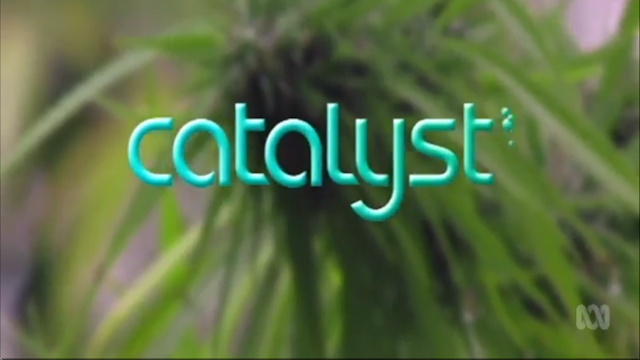The ABC says the run of the popular science television show, Catalyst, has reached the end in its current format.
In its place, the ABC has proposed it will deliver a series of 17 one hour-long documentaries that will be aired later in the evening than the current half-hour science magazine style programming.
It would appear that most Catalyst staff will be let go from the new series as the ABC says “up to 9 ongoing staff members may be affected” although “some staff” will be offered other positions.
This change is despite Catalyst’s popularity and relatively inexpensive costs. Many documentary makers are somewhat sceptical of the ability of the ABC to follow through on the promise of the 17 documentaries independently produced from outside the ABC.
According to several film makers, one-hour programs take disproportionately greater resources and can have a production time running to years in order to get a good product.
This begs the question as to whether or not the ABC will be able to carry through with this replacement.
These changes also run in the face of a recent review for the ABC that suggested short science programs shown early in the evening were more popular than longer programs shown later in the day.
So why is the ABC taking this dramatic turn with the popular and award-winning Catalyst?
A convenient controversy?
Catalyst has not been without its controversies over the past three years.
First there was the 2013 story on statins and heart disease which was found to breach the ABC’s editorial standards on impartiality.
Then there was the July 2016 Wi-fried episode which relied on a single study to claim links between Wi-Fi and mobile phone networks and brain cancer.
Wi-fried was criticised by several academics writing in The Conversation. It was also described as “scientifically bankrupt” by a leading Australian cancer researcher.
The episode was again found to have breached ABC’s impartiality guidelines.
The same reporter, Dr Maryanne Dimasi, was involved with both stories, and could be one of those losing their job in the axing of the old program format.
Is the failure of a few instances (as egregious as they appear to be) of investigative reporting not countered by the award-winning reporting of other Catalyst journalists?
Public disinterest in science?
Prime Minister Malcolm Turnbull has emphasised the critical importance of innovation and science to Australia’s future. And he is right.
Without an articulate and science savvy population, Australia runs at risk of falling behind in the globalisation stakes.
As climate change intensifies, technology continues to escalate and human population busts, the need for greater understanding of science and its processes will determine whether we are able to seize opportunities or not.
The axing is presumably not because of audience disinterest. Audiences want more science, not less. In a poll conducted by the ANU in 2010, almost all of the 518 respondents reported an interest in science and related topics.
A national survey conducted on behalf of Inspiring Australia in 2014 similarly found 82% of respondents engage with some form of science reporting at least fortnightly.
Most science itself isn’t a hard sell for media organisations operating on limited resources and highly competitive for market share.
It’s the critical examination of science in media that is hard to do, but worth trying (despite Catalyst’s lapses).
The science investigators
While scientists can be excellent communicators, they are not necessarily great investigative reporters. The ABC’s announcement suggests that a future science program could be in the scientist-led format.
If well-resourced, this could be a successful vehicle for some aspects of science with some audiences. But it will favour established science that lends itself to in-depth treatment.
Where will the up to date stories of Australian science be broadcast? Where will the audiences go who want to watch a bit of the latest Australian science content?
In a time when “innovation” is the catch-cry, we need a reliable source of information to promote the research being done and the discoveries being made.
Probably most important is the role of science journalists in telling us what science means, providing objective views in the face of unrelenting hype and wrangling the amazing scientific talent in Australia.
Australia’s science stories
Anyone can start a Facebook page or a YouTube channel, but where is the quality control? There are notable benchmarks of quality out there, such as Veritasium, VSauce and ScienceAlert to name a few, but these exist online.
Within the traditional broadcast media context, it is difficult to identify a program that consistently delivers critical appraisals of science and its implications.
Sure, there exists plenty of other options for science stories to be told in the media and Australia oozes talent in science communication. This includes the award-winning Jonica Newby of Catalyst who finds her future in question.
But all of this talent needs a vehicle.
Certainly there is a societal shift towards accessing content online, such as The Conversation, rather than via the traditional media. But the role of the traditional journalist – to convey information accurately, impartially and critically – is vital, whatever platform is used.
If even the best science journalists in the country are unable to retain positions that allow them to do that, then Australian science is either unrelentingly hyped, unquestioned, or at worst ignored.
It’s hard to be a clever country when you’re in the dark.

